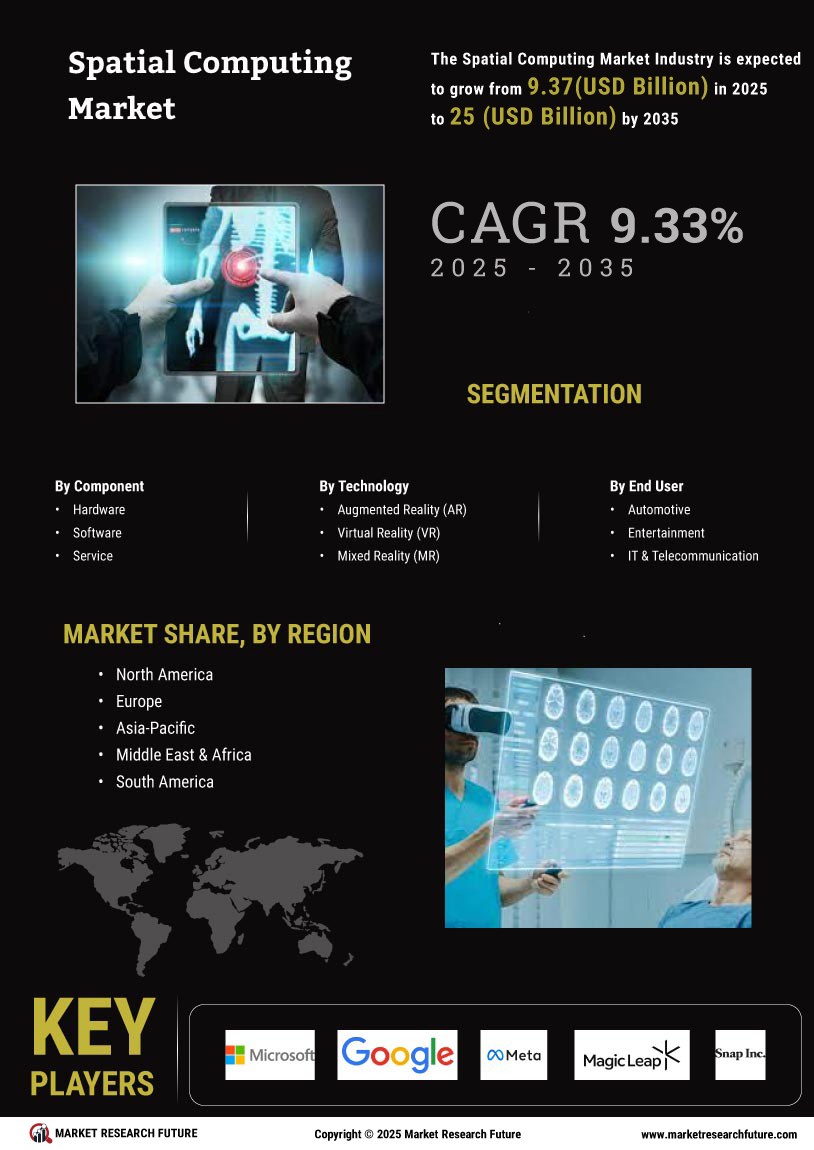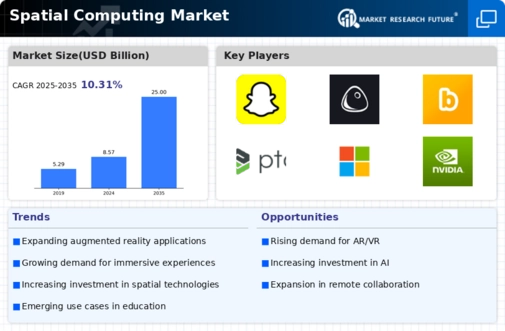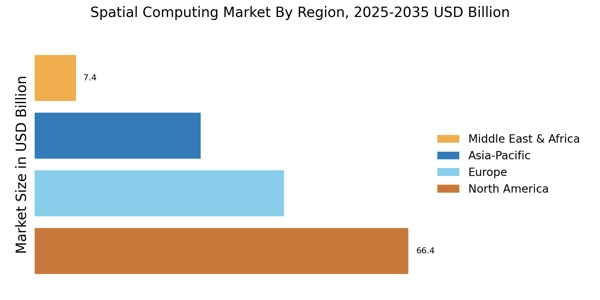Advancements in Hardware Technology
The Spatial Computing Market is experiencing a surge in demand due to rapid advancements in hardware technology. Innovations in processors, sensors, and display technologies are enabling more sophisticated spatial computing applications. For instance, the introduction of high-performance GPUs and AR/VR headsets has significantly enhanced user experiences, allowing for more immersive environments. According to recent data, the market for AR/VR hardware is projected to reach USD 100 billion by 2026, indicating a robust growth trajectory. This hardware evolution not only improves performance but also reduces costs, making spatial computing solutions more accessible to various sectors, including education, healthcare, and entertainment. As these technologies continue to evolve, they are likely to drive further adoption and investment in the Spatial Computing Market.
Expansion of Use Cases Across Industries
The Spatial Computing Market is witnessing an expansion of use cases across diverse industries, which is a significant driver of growth. Sectors such as healthcare, manufacturing, and education are increasingly adopting spatial computing technologies to enhance operational efficiency and training processes. For instance, in healthcare, surgeons are utilizing AR for enhanced visualization during procedures, which has been shown to improve outcomes. The manufacturing sector is leveraging spatial computing for design and prototyping, leading to reduced time-to-market. Data suggests that the adoption of spatial computing in these industries could lead to a 30% increase in productivity. As more industries recognize the benefits of spatial computing, the market is likely to see accelerated growth and innovation.
Rising Adoption of Remote Work Solutions
The Spatial Computing Market is experiencing a notable increase in the adoption of remote work solutions, which is reshaping how organizations operate. As businesses continue to embrace flexible work arrangements, spatial computing technologies are being utilized to facilitate collaboration and communication among remote teams. Tools that incorporate augmented and virtual reality are enabling immersive meetings and interactive presentations, which can enhance engagement and productivity. Data indicates that companies using spatial computing for remote collaboration report a 25% increase in team efficiency. This trend is likely to persist as organizations seek to optimize their remote work strategies, further driving growth in the Spatial Computing Market.
Growing Demand for Enhanced User Experiences
The Spatial Computing Market is increasingly driven by the growing demand for enhanced user experiences across various sectors. Businesses are recognizing the potential of spatial computing to create engaging and interactive environments that can improve customer satisfaction and retention. For example, retail companies are utilizing augmented reality to allow customers to visualize products in their own spaces before making a purchase. This trend is supported by data indicating that 61% of consumers prefer retailers that offer AR experiences. As organizations strive to differentiate themselves in competitive markets, the integration of spatial computing technologies is becoming a strategic imperative. This demand for immersive experiences is expected to propel the Spatial Computing Market forward, as companies invest in innovative solutions to meet consumer expectations.
Increased Investment in Research and Development
The Spatial Computing Market is benefiting from increased investment in research and development, which is fostering innovation and technological advancements. Companies and governments are allocating substantial resources to explore new applications and improve existing technologies. This investment is crucial for developing next-generation spatial computing solutions that can address complex challenges in various fields. For example, funding for AR/VR research has seen a significant uptick, with estimates suggesting that R&D spending in this area could exceed USD 20 billion by 2025. Such investments not only enhance the capabilities of spatial computing technologies but also stimulate collaboration between academia and industry, leading to breakthroughs that could redefine the market landscape.


















Leave a Comment